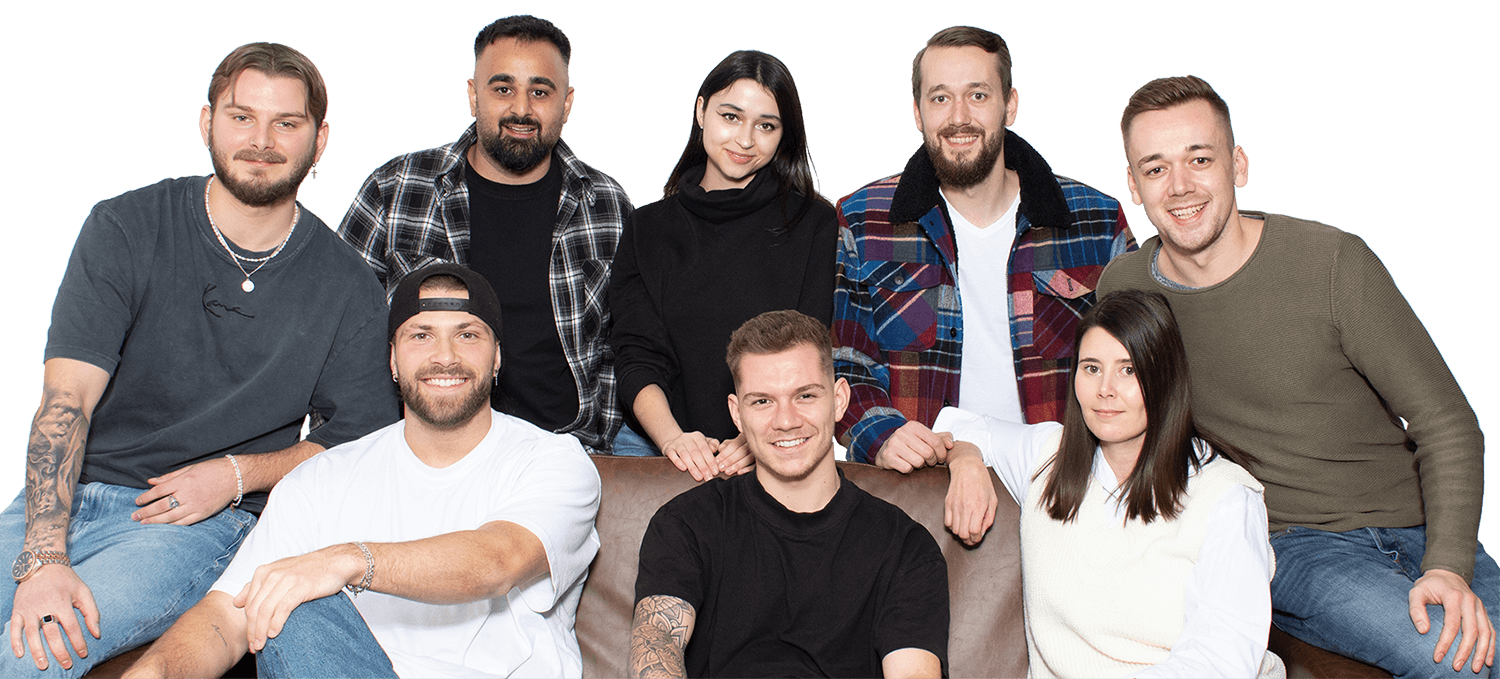Blue Feather - Scardinius erythrophthalmus - 8-11 cm
incl. VAT plus shipping costs
Currently not available
Delivery only innh. Germany and Austria possible.
Switch to the German store
-10% EXTRA-RABATT
auf Deinen gesamten Warenkorb!!
- Item no: 11588
Fast delivery times
All products are in stock with us!14 years of breeding experience
Let our team of experts advise you!High customer satisfaction
from over 3,000 reviews "The blue fe ather is a bluish breeding form of the rudd with the scientific name Scardinius erythrophthalmus. Adult bluegills are bluish and have transparent fins, juveniles are silvery white. The bluefin grows to about 20-30 cm in length, exceptional specimens can reach a body length of up to 40 cm. The restrained-elegant colored pond fish, like their relatives, the rudd and the golden rudd, belong to the carp fish. Here you buy specimens in length 8-11 cm.
The blue feather goes back to the rudd, a pond fish native to Europe, which can easily overwinter in a sufficiently deep garden pond with a depth of at least 1 to 1.30 meters. Bluegills lie in the mud at the bottom of the pond during the cold season and hibernate. The surface of the pond must not freeze over completely, so it is advisable to use an ice freezer or a pond thermostat. In this way, the water surface remains open in winter and oxygen can diffuse into the pond water.
If the water quality in the garden pond leaves much to be desired, bluegill will lose their color almost completely. For prevention, we recommend the use of a sufficiently large pond filter, good planting in the pond and at the pond edge, which depletes pollutants and an oxydator for garden ponds, a water feature or an air pump for a good oxygen supply, especially in summer. We recommend a pond volume of at least 1000 liters per fish.
As gregarious schooling fish, bluegill need a group of 5-10 conspecifics. It is possible to mix the bluish breeding form with wild red feathers and with golden red feathers. Blue feathers are very good by-fish for koi, provided that the garden pond is sufficiently large.
Optimal for keeping rudd, golden redfeathers and bluefeathers is a planted pond, which is created in partial shade and has a somewhat muddy bottom, because the fish like to search for food in the pond mud.
Shallow water zones densely planted with plants for the edge of the pond are useful if you want to raise offspring of bluegill. There they like to court and spawn. The females of the blue feather lay up to 200,000 eggs on the plant stems. There they are fertilized by the males. Breeding of the blue feathers is possible in the garden pond so without further ado.
Bluegills, like their golden and red-finned siblings, the golden rudd and the wild rudd, are omnivorous. They show a clear preference for plant food and feed in the pond mainly on nuisance algae and on dead or soft plant parts - even pond plants with rather soft, tender leaves are readily nibbled. Water lilies, on the other hand, are spared. Invertebrates such as insect larvae, crustaceans and worms as well as snails are also part of the Blue Feather's diet. In summer, it is wonderful to watch the flock of blue feathers standing just below the water surface, lurking for mosquitoes to lay their eggs on the water surface. Bluegill larvae in the pond are also reliably eaten by bluegills.
If the pond is well planted and sufficiently large, there is usually no need to feed bluegills separately. The pretty pond fish will gladly accept high-quality goldfish food with a strong vegetable content, in case you do need or want to supplement their diet.
Length: 8-11 cm
Our food recommendation: The professional Pond Time Goldfish Food is a complete feed for goldfish and pond fish, which due to its high quality composition allows fast growth without simultaneous fattening of the animals. Due to its buoyancy and composition it can be optimally absorbed and digested by the fish, which prevents algae plagues in the garden pond and keeps the germ load of the water low.
| Scientific name | Scardinius erythrophthalmus |
| German name: | Bluegill, bluegill, loggerhead, |
| Difficulty level: | for beginners |
| Origin/Distribution: | Europe |
| Coloration: | bluish body color, translucent fins |
| Age expectancy | 20 years |
| Pond size: | minimum 5 cubic meters for five fish, 1000 liters for each additional one |
| Food | Omnivorous, plants, algae, insect larvae, insects, worms, crustaceans, special goldfish food |
| Breeding | relatively easy in the pond |
| Behavior | Diurnal |
| Group size | from five fish |
- Item no: 11588
Entdecke die Garnelio Welt!
Garnelio gehört zu den größten Onlineshops für wirbellose Aquarientiere weltweit.
Viele Artikel gibt es exklusiv nur bei uns im Shop.





